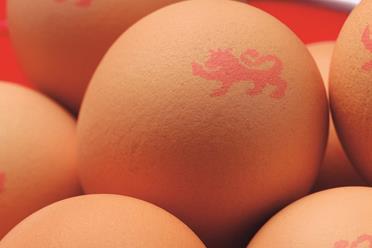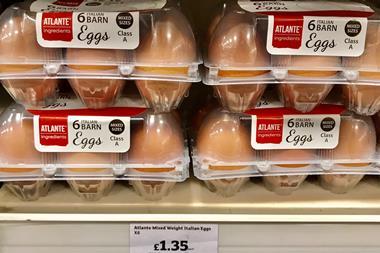
As an industry, we can’t be blamed for tiring of endless talk of price rises and cost increases. Consumers are no different, as shown by the latest biannual Fmcg Demand Signals report from IRI, which reveals signs of severe ‘inflation fatigue’ amongst shoppers.
Against this backdrop, shoppers are having to adapt. Reliable cupboard staples are no longer as cheap as they were. Canned categories such as beans, pasta and soup have seen direct price increases of around 30% in the latest four weeks versus last year. These are some of the highest increases seen in grocery, led by dry pasta at over 38%.
In these areas we’re seeing a shift to private label as a result – a trend that is most notable in canned beans and pasta, butters and spreads, frozen meals and snacks, and prepacked cheese. Across these categories alone, £54.1m has moved to private label in the past 12 weeks compared to the same time last year.
It’s clear shoppers are making the switch when they notice big rises on branded favourites. Indeed, in every month since March, the sales volume for private label has been greater than brands, something that hasn’t been seen in the past five years.
But behavioural shifts aren’t just about shopping on a budget. Among those we surveyed for IRI’s report, we’re also seeing a marked shift in the categories people are buying from as they look to avoid waste. In many ways, it’s a return to late-70s and early-80s behaviour.
Canned goods have caught recent headlines in terms of a resurgence and growth versus the rest of the market. What is more interesting is the areas of canned goods that are leading this growth – principally canned fruit, canned hot meats such as hot dogs, and quick meal solutions, i.e. those you add hot water to.
While the latter supports the idea people are moving away from buying lunch out of home and are on the hunt for more value-driven solutions, canned fruit and hot meats suggest potential alternatives to fresh or chilled items, which don’t have as long a shelf life.
Our data shows consumers are not buying canned goods in an attempt to stock up on cupboard essentials, as may have been the case previously. Rather, this is a move by shoppers to reduce both spend and waste, benefiting ambient products, frozen and canned goods.
There is also growth in the sales of flour and premix individual cakes and brownies, against a decline of prepackaged cakes. This not only shows shoppers are looking to save and are exploring ways to do so – scratch cooking versus convenience, or entertaining kids at home on a budget – but again indicates a desire to manage waste and move away from potentially limiting best before dates, as home bakers can make more for less.
Only last week, Tesco issued new advice to shoppers on how to reduce buying unnecessary food, revealing 73% of UK households have thrown away forgotten items lurking in cupboards, fridges and freezers. In a cost of living crisis, the reality of this is pretty shocking, with Wrap claiming the average UK household wastes £800 of edible food each year.
As an industry we’ve made great strides on reducing food waste in the supply chain, and at IRI we’re proud to have partnered with FareShare to help drive new efficiencies through data analysis to better redistribute surplus food in the UK. But consumers need support in this area, as Tesco has recognised. While food waste campaigns focusing on the benefits of frozen food aren’t a new idea, now is the time these messages can truly resonate with people.
There is a continued opportunity for retailers and brands to dig into these new buying patterns in order to win in a competitive market. I’ve spoken about it before, but now is the time to drill into data and utilise this type of insight to grow as a business. From in-store displays to marketing campaigns, getting under the skin of shoppers’ priorities right now will be the real difference between winning or being left behind.



















No comments yet